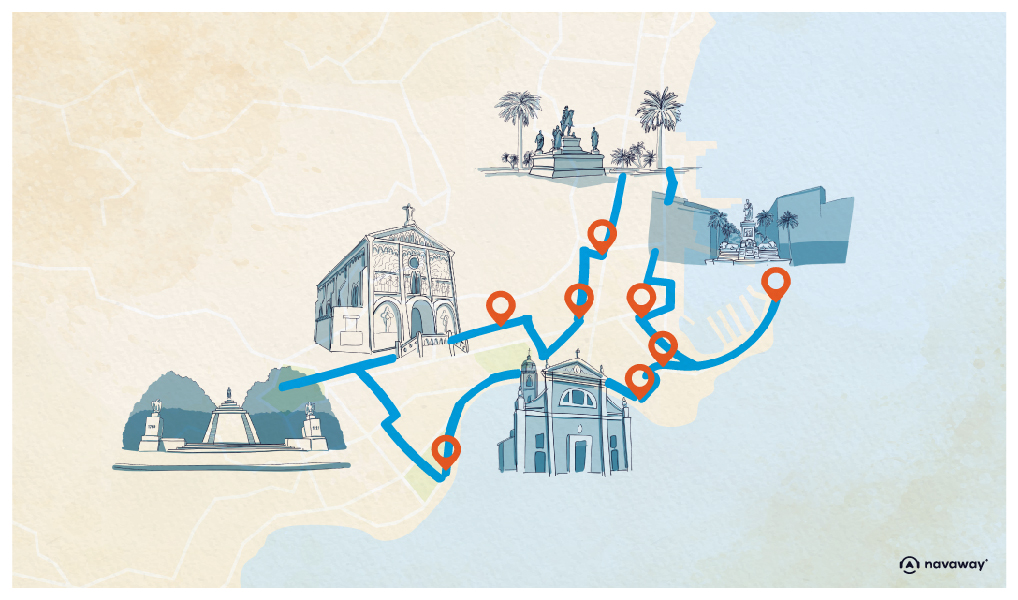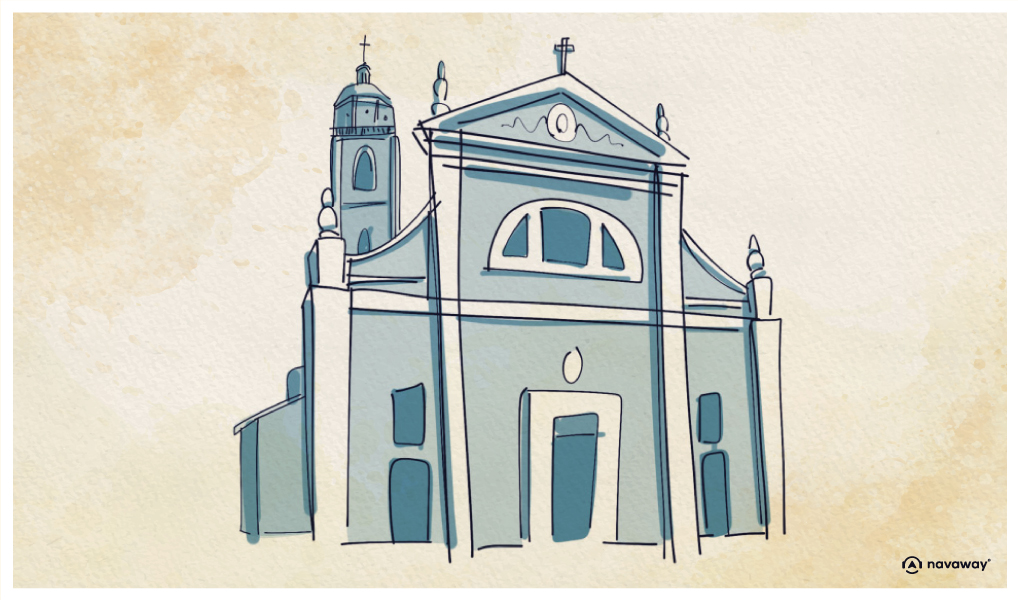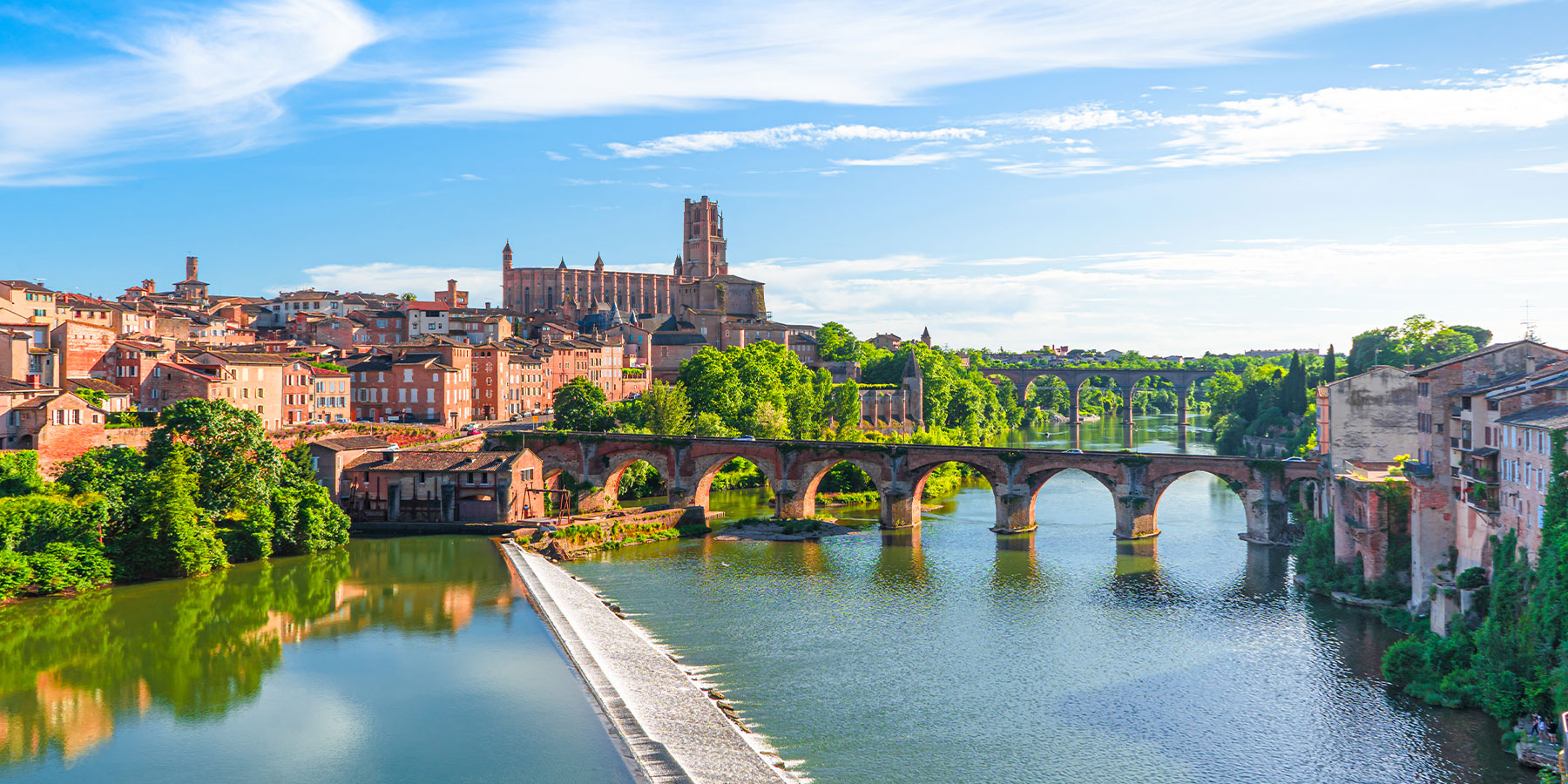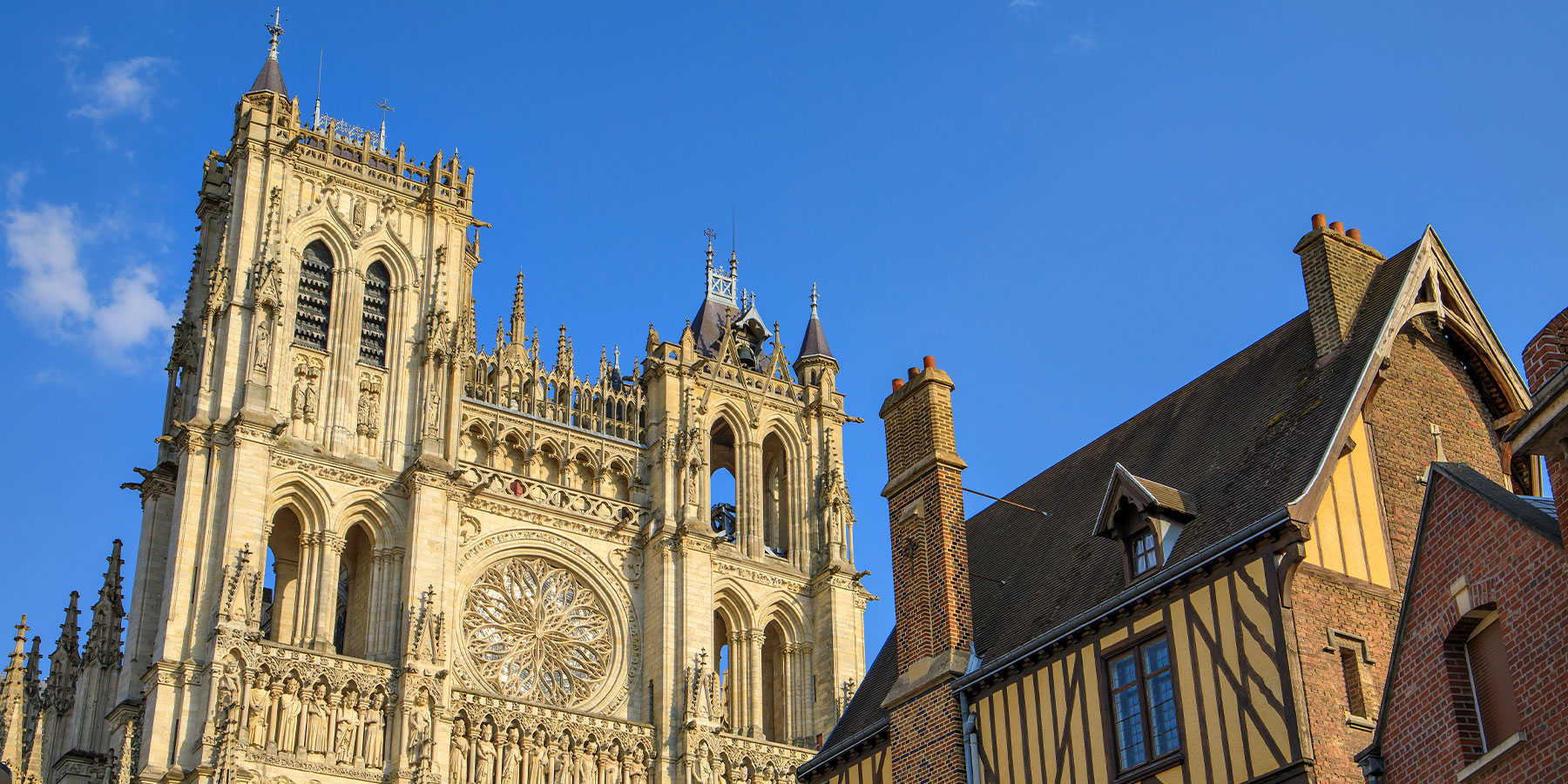
Cathedral of Santa-Maria Assunta

This point of interest is available as audio on the tour: Visit Ajaccio, Imperial City
Don’t let its small size fool you, this pretty Baroque cathedral, with its ochre facade and blue-grey dome, is the Cathedral of Santa Maria Assunta. Dedicated to the Assumption of the Virgin Mary, it was built at the end of the 16th century, replacing the 6th- and 12th-century cathedrals that had preceded it, following the typical Latin cross architecture of the Counter-Reformation. The 16th century was a key period in the history of Christianity. We were in the middle of a religious war and the Protestant Reformation. The Church, under pressure, launched a counter-reformation movement to combat the emergence of Protestantism. This was the birthplace of Baroque art, in which the glory of God was portrayed. The interior is also different: in Gothic cathedrals, a space is created for the procession, so you can go around the church via the side aisles, whereas in the new Baroque churches, the emphasis is on the sermon and the demonstration, with a very wide central nave dominated by the pulpit. The Latin inscription above the entrance door tells us that this new cathedral was made possible thanks to the request made by the Council of Elders to the Senate of Genoa and Pope Gregory XIII. We also learn of the regrets of Bishop Jules Giustinani, who laid the last stone and would have liked to have laid the first one too! This phrase is explained by the fact that the bishop regretted not having been in charge of the work from the beginning, so as to be able to build a larger cathedral. There’s another rumour about Bishop Giustiniani. It is said that he was tricked by the captain of the ship Santa Maria, a certain Francisco Acquaviva, who was to bring back the Carrara marble needed for the cathedral portal. Acquaviva first told him that the order had sunk in the sea, then, when the bishop sent him back to bring back a new shipment, told him that a storm had washed it all away! The bishop, believing in forgiveness and the honesty of men, is said to have forgiven him each time, and reissued the order. However, the story goes, that the captain, an inveterate drinker and gambler, had lost marble and money at cards. The last order never arrived, and the bishop ended up making a new portal with different materials. The story goes that the captain reappeared several years later, telling anyone who would listen that he had been captured by African pirates, taken prisoner and sold to Tunis as a galley slave. If we are to believe our man, the white marble planned for Ajaccio illuminates one of the mosques in Tunis. Legend aside, take the time to enter the cathedral. You’ll see a beautiful high altar, donated in 1811 by Princess Elisa, Napoleon’s sister. You can also see the white marble baptistery where the emperor was baptized. This church remained important to Napoleon until his death. The Notre-Dame du Rosaire chapel housed the tomb of the Bonaparte family until the construction of the imperial chapel. In exile in Saint Helena, he wrote: “If my corpse is proscribed from Paris as my person was, I wish to be buried with my ancestors in Ajaccio Cathedral, Corsica.


Discover Ajaccio with app
An interactive guide through the most beautiful streets, squares, and districts
19 fun audioguides full of historical facts, anecdotes, and legends




Comments